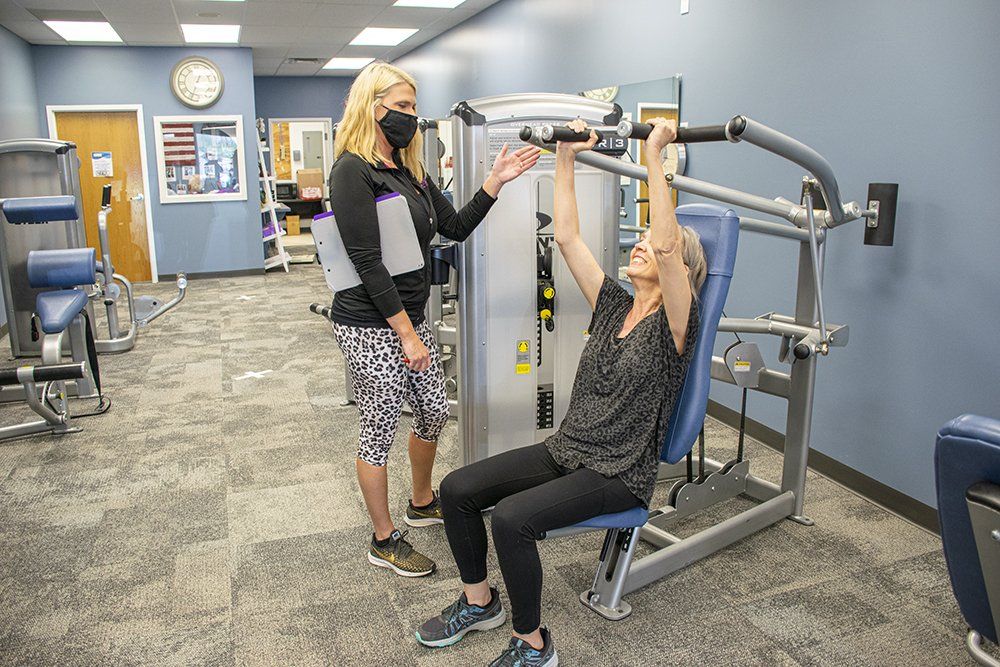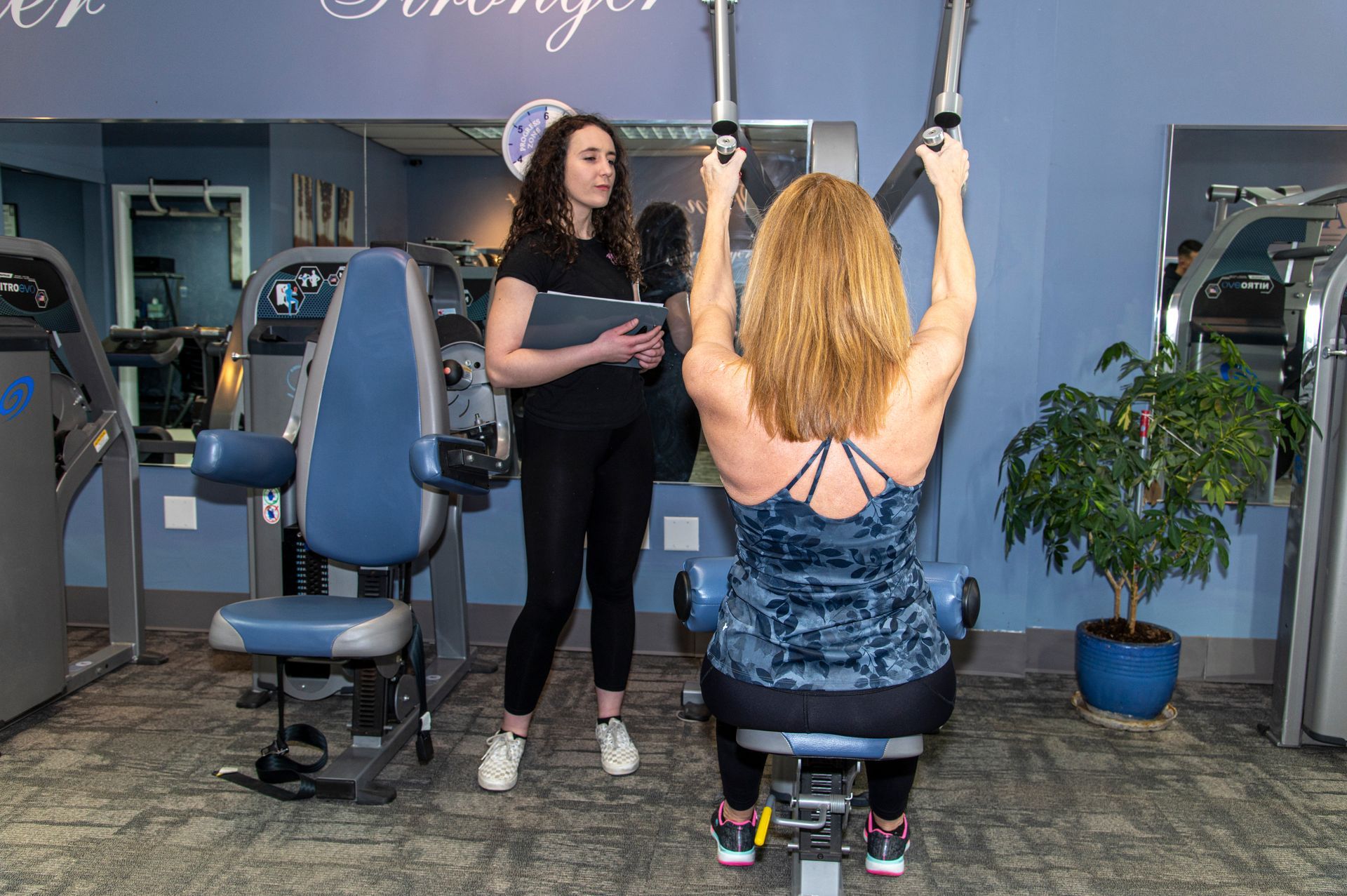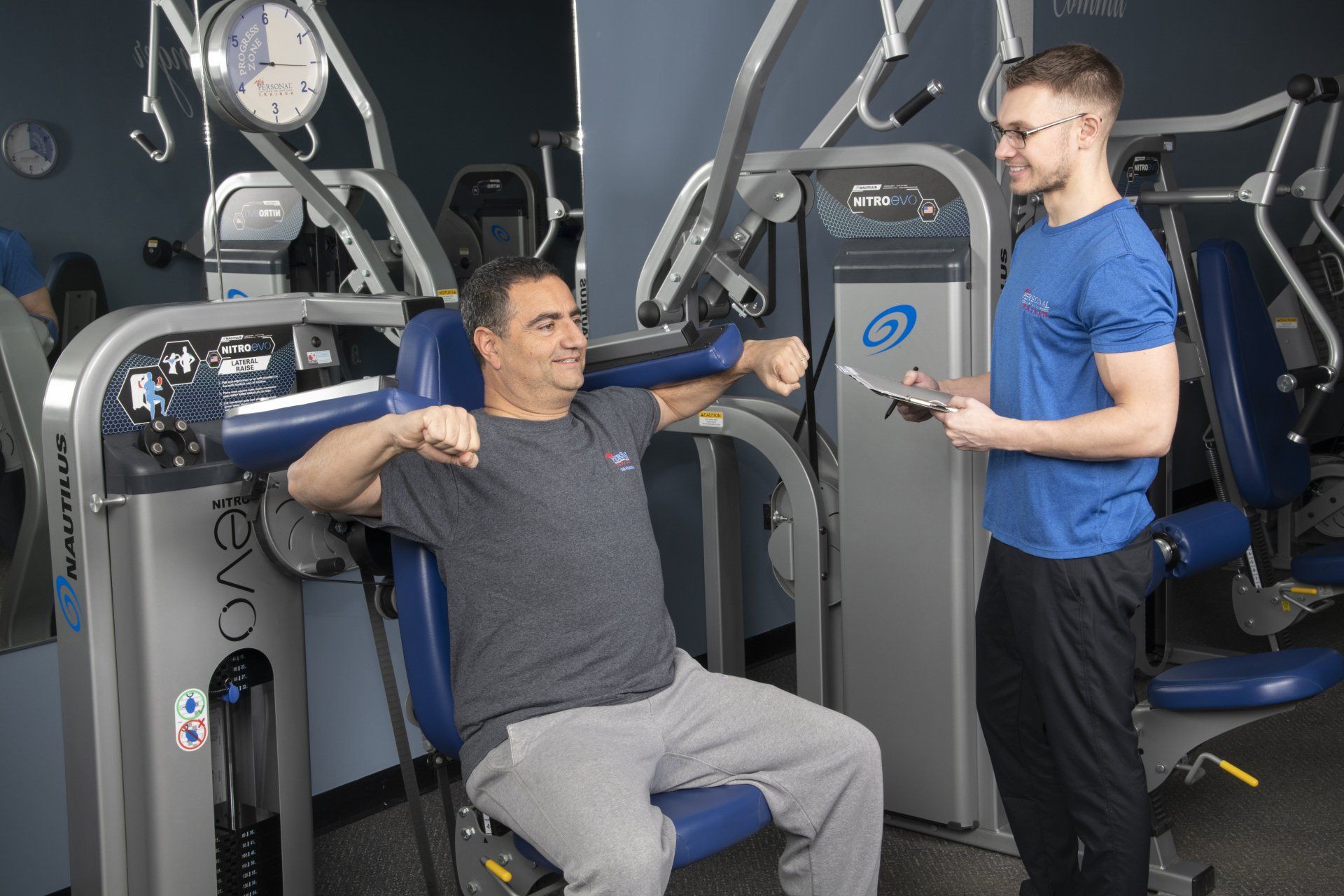Fiber Types
Some people need more or less repetitions than others. There are several different fiber types in human muscle, but for all practical purposes, two are predominant to reflect muscular performance. These two are known as fast twitch fibers and slow twitch fibers. Most men and women have a combination of these fiber types.
Fast twitch fibers can produce a much higher level of force but can ____________ for only a very brief period of time. People who have predominately fast twitch fibers will be able to demonstrate much greater strength (with all other things being equal) than average, but will be quite inferior when performing endurance type activity. Fast twitch individuals are able to recruit many more muscle fibers per repetition and must be exercised with fewer repetitions. If a fast twitch subject is exercised using a high or even average amount of repetitions, the subject will make a much deeper than average muscular inroad into their starting level of strength and will be (depending on the actual amount of repetitions) grossly over trained. The subject would need an extensive period of time to recover before they could train again. Usually these types require only 10 to 30 seconds of time under load (TUL) to be most productive.
On the other side of this comparative, slow twitch muscle fibers cannot produce even an average amount of force per repetition, but are capable of enduring a much higher amount of exercise for a much longer period of time. These individuals will need three to five times (usually 90 to 120 seconds) of time under load (TUL) to produce a productive and meaningful inroad for the muscle to be stimulated properly.
A fast twitch subject will usually make approximately a 3 to 6 percent inroad per repetition, meaning that every repetition performed properly will reduce their starting level of strength by about 4 to 9 percent. A slow twitch subject will usually make an approximate 1.5 to 2 percent inroad per repetition.
These are just approximates but do serve to explain the vast differences needed for some men and women. Studies have shown that a 15 to 25 percent muscular inroad is proper for stimulating the correct overload to produce best results, not too little or too much. Depending on the fiber type, it reveals that some individuals with fast twitch fiber types might do best performing only 2 or 3 ten- second repetitions to product a 15 to 25 percent inroad, while individuals with slow twitch fiber types will do best by using 9 to 12 ten-second repetitions to produce the same 15 to 25 percent inroad.
These extremes represent only about 20 to 30% of the populous with some 70 to 80% doing quite well by making 3% muscular inroad per repetition. This repetition range would produce a 12% inroad multiplied by four repetitions, 15% multiplies by 5 repetitions, 18% multiplies by 6 repetitions, 21% multiplies by 7 repetitions, and 24% multiplied by 8 repetitions.
Now, the question arises, “How do you know what rep range will allow a client to demonstrate his or her best results?” Good question. First of all, if a client is making continual and satisfactory progress using our standard four to eight repetition protocol, then this is proof that this rep range is proper. Usually if they show progress from the very beginning, this is a good indication that what they are doing is right for them. When they start showing signs of a slow down or halt in their progress, it is usually because of one or more of the “10 Reasons for Cessation of Progress.” If you determine that it has nothing to do with any of these ten reasons, then it should be suspected that “extreme fiber types” are the problem.
The way to test for fiber type is quite simple. The first thing that must be known is a client’s repetitions maximum. This is best determined by using a single joint exercise such as a leg extension or arm curl. Usually what this will reveal for the leg extension can be applied for all lower body exercises. Likewise, the same is true in testing and upper body exercise such as an arm curl and can be used for all upper body exercises. Compound exercises such as the leg press, chest press, etc., usually need slightly more repetitions than an isolation exercise due to multiple muscles and joints sharing the stress. To determine a client’s one repetition maximum strength, a client must first warm the muscle by doing several sets of lighter repetitions. The client should be given a weight that the trainer suspects could be their maximum, progressing up using only one repetition at a time. If 100 pounds is used but the client could be two repetitions after a couple minutes of rest, the weight would then have to be increased to 105 or 110 pounds. When the maximum single repetition is performed in GOOD FORM, the client should use a weight that is 80% of their single maximum effort lift.
Example: If an individual’s maximum effort lift in good form is 100 pounds, then you would use 80% of that weight of 80 pounds for one all out set of repetitions. Whatever the number of repetitions turn out to be, it will be their proper amount of repetitions needed to make an approximate 20% inroad. To this add .15 to get your maximum range and subtract .15 to get your minimum range.



Learn more about our unique approach to achieving a healthier lifestyle by visiting us on one of our social media channels.
All Rights Reserved | My Personal Trainer | This site is powered by Bluefoot.

